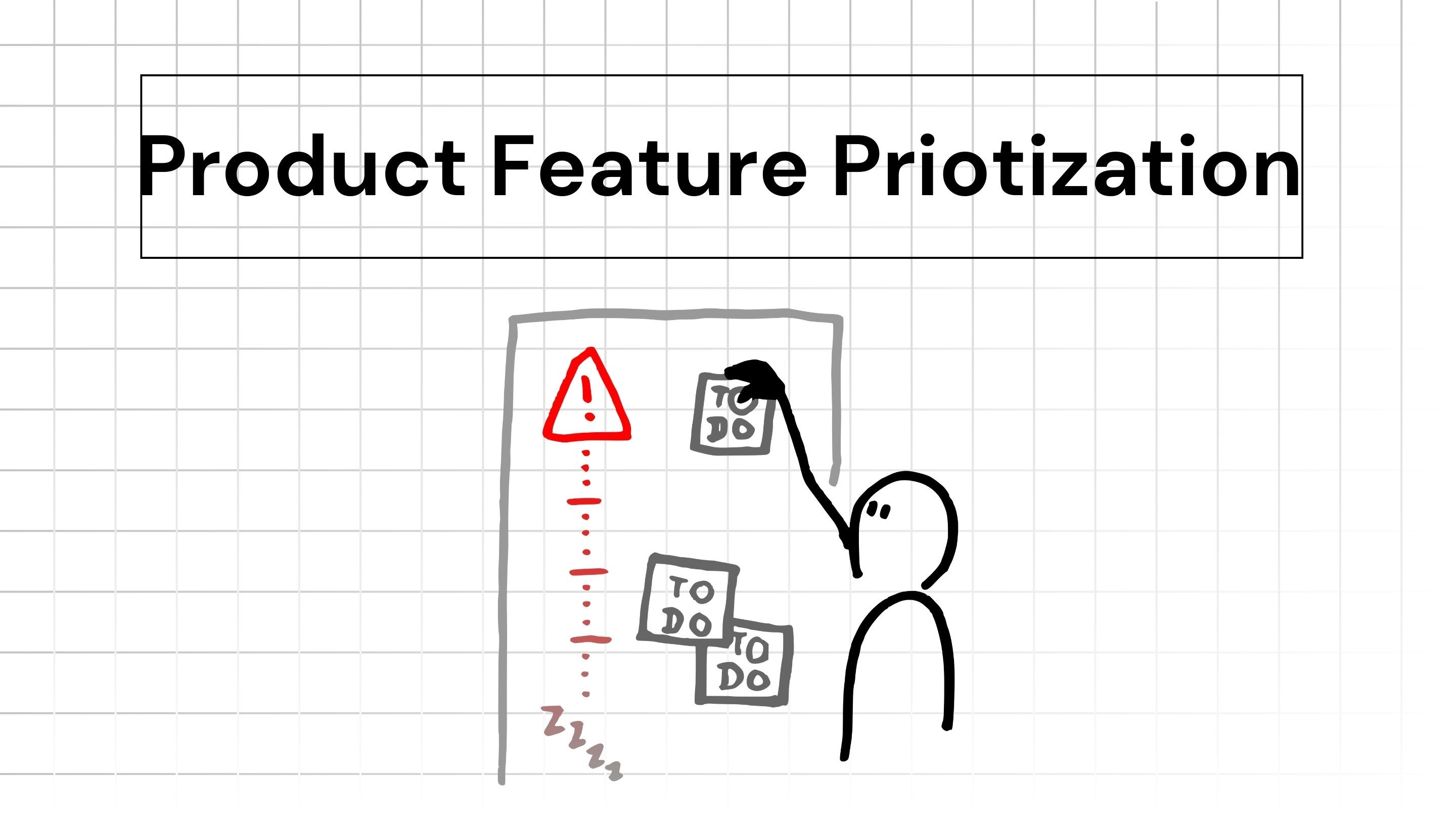
Iterate AI
Jan 17, 2025
Prioritizing features effectively is a critical task for any product manager at any company size. A wrong decision can lead to wasted resources, delayed timelines, and sometimes even loss of competitive edge.
Thankfully, there are frameworks to help you streamline the decision-making process. These frameworks are only a way to guide decisions. You have to consider your data and the landscape of your competitors to make the necessary decisions.
Here are 10 common frameworks that are used across industries. To make understanding it easier, let’s look at all frameworks with the same example.
Example:
Imagine you’re managing a fitness app, and you need to prioritize features for your next release. You’re considering the following features:
Integration with wearable devices
Personalized workout plans
Social sharing for achievements
Daily activity reminders
Advanced analytics for performance tracking
For the sake of the example, let’s consider the following as the product challenges and 3-month roadmap and see how to prioritize features with them as the influencing factors.
Current product challenges:
User retention: Users are dropping off after the first month due to lack of engaging features.
Device compatibility: Many users are requesting integration with their wearable devices.
Feature clarity: Users are unclear about the app’s unique value proposition compared to competitors.
3-month roadmap
Month 1:
Launch integration with popular wearable devices.
Add a feedback mechanism to understand feature requests better.
Month 2:
Roll out personalized workout plans to engage users.
Improve in-app messaging to educate users about features.
Month 3:
Introduce social sharing to foster community engagement.
Conduct surveys to identify the next set of priorities.
Key Influencers of Product Feature Prioritization
Here are the common things that influence product feature prioritization:
User needs and feedback
Your current user needs and feedback is one of the key factors to consider when prioritising features. This includes analyzing customer feedback, complaints, and suggestions to prioritize features that solve real problems.
Example: If users frequently request a specific integration or feature, such as wearable compatibility, it should take precedence.
Alignment with product roadmap and business Goals
Features that align with overarching business objectives, such as increasing revenue, improving retention, or entering new markets, are given priority.
Example: A feature that enhances user engagement and retention may be prioritized if the goal is to reduce churn in 2 quarters.
Market trends and competitor analysis
To make your product competitive and be on par with competitor standards in terms of features, you need to monitor their competitor offerings and industry trends. Missing a key trend can lead to a loss of market share.
Example: If competitors offer wearable device integration, it might become a priority to remain relevant.
Resource constraints
Only you’d know about the internal constraints. Limited time, budget, and technical resources can heavily influence prioritization. Features that are quick to implement or require fewer resources may be prioritized.
Example: Daily activity reminders might be a low-cost, high-impact feature compared to complex analytics tools.
Time-to-Market
Features that allow a faster release to market and deliver immediate value are often prioritized especially in start-ups where speed and execution is everything.
Example: A quick-win feature like daily activity reminders might be chosen for a near-term release.
9 Frameworks to Use to Prioritize Product Features
Here are the common 9 frameworks used:
1. MoSCoW (Must-Have, Should-Have, Could-Have, Won't-Have)
How It Works: Categorize features based on necessity:
Must-Have: Integration with wearable devices (resolves a major user request).
Should-Have: Personalized workout plans (boosts engagement).
Could-Have: Social sharing (adds community features).
Won't-Have: Advanced analytics (low current demand).
Considering Roadmap and Challenges: Since wearable integration addresses device compatibility and personalized plans tackle retention, these are prioritized in Months 1 and 2.
Drawback: Subjectivity in classification can lead to disagreements.
Fix: Define clear criteria for each category. For example, prioritize features that directly address retention or compatibility.
2. Kano Model
How It Works: Categorize features based on their impact on customer satisfaction into basic, performance and exciting needs. Graph it out against investment required and decide.
Basic Needs: Integration with wearables (users expect device compatibility).
Performance Needs: Personalized workout plans (engagement increases as plans improve).
Delighters: Social sharing (encourages interaction).
Considering Roadmap and Challenges: Basic needs like device integration are prioritized in Month 1. Performance needs follow in Month 2, with delighters in Month 3.
Drawback: Requires significant customer research, which can be time-consuming.
Fix: Use quick surveys to confirm priorities before finalizing the roadmap.
3. RICE (Reach, Impact, Confidence, Effort)
How It Works: Score each feature based on reach, impact on customers, confidence in your data, and effort required to make the features live:
Integration with wearables: High reach, high impact, medium effort.
Personalized plans: Medium reach, high impact, high confidence, high effort.
Social sharing: Medium reach, medium impact, low effort.
Considering Roadmap and Challenges: Wearable integration scores the highest and aligns with Month 1. Personalized plans follow for Month 2, and social sharing is a low-effort addition in Month 3.
Drawback: Assigning scores can be arbitrary.
Fix: Standardize scoring criteria based on user retention and compatibility goals.
4. Value vs. Complexity Matrix
How It Works: Plot features on a 2x2 grid:
High Value, Low Complexity: Quick wins (e.g., daily reminders).
High Value, High Complexity: Strategic investments (e.g., wearable integration).
Low Value, Low Complexity: Nice-to-haves (e.g., social sharing).
Low Value, High Complexity: Avoid (e.g., advanced analytics).
Considering Roadmap and Challenges: Focus first on high-value features addressing challenges like user retention and device compatibility.
Drawback: Oversimplifies trade-offs.
Fix: Add strategic alignment to clarify why high-complexity features like wearable integration are prioritized.
5. Cost of Delay (CoD)
How It Works: Prioritize by calculating the cost of not delivering a feature:
Integration with wearables might cost $10,000/day in lost potential subscriptions.
Personalized plans could lead to $5,000/day in lost user retention.
Considering Roadmap and Challenges: Wearable integration’s high CoD makes it the top priority for Month 1, followed by personalized plans.
Drawback: Intangible costs are hard to quantify.
Fix: Use proxy metrics like churn rates to estimate financial impact.
6. Story Mapping
How It Works: Map the user journey and identify essential features:
User Journey: Sign up → Set goals → Track activities → Share achievements.
Essential Features: Integration with wearables (Track activities), personalized plans (Set goals), social sharing (Share achievements).
Considering Roadmap and Challenges: Map features to address pain points like retention and compatibility in the first two months.
Drawback: Can be overwhelming for complex products.
Fix: Focus on solving primary challenges in early iterations.
7. Weighted Scoring
How It Works: Assign weights to criteria (e.g., impact, cost, user demand) and score features:
Integration with wearables: 90 (High impact, high demand).
Social sharing: 50 (Moderate impact, low demand).
Considering Roadmap and Challenges: High scores for wearables and personalized plans align with the first two months of the roadmap.
Drawback: Too many criteria can cause analysis paralysis.
Fix: Limit criteria to key metrics like user retention and compatibility.
8. Eisenhower Matrix
How It Works: Categorize tasks into:
Urgent/Important: Integration with wearables (core functionality).
Important/Not Urgent: Personalized plans (long-term engagement).
Urgent/Not Important: Daily reminders (quick user win).
Not Urgent/Not Important: Advanced analytics (low current demand).
Considering Roadmap and Challenges: Prioritize urgent/important features to address immediate challenges like compatibility.
Drawback: Overemphasizes urgency.
Fix: Regularly revisit non-urgent features to adapt to evolving priorities.
10. Opportunity Scoring
How It Works: Identify the gap between importance and satisfaction:
Integration with wearables: High importance, low satisfaction (top priority).
Advanced analytics: Low importance, low satisfaction (low priority).
Considering Roadmap and Challenges: Focus on high-importance features like wearable integration to maximize satisfaction.
Drawback: Requires high-quality feedback.
Fix: Combine surveys with usage analytics to validate gaps.
All Your Features Need Product Analytics
No matter the framework or approach, prioritizing features is only the first step. Product analytics is essential to track their performance, measure impact, and inform future decisions.
With Iterate AI, setting up analytics is effortless for product managers as they use our tool to create events, code and implement. You can also set up dashboards and reports to see the data visually. Learn more.
